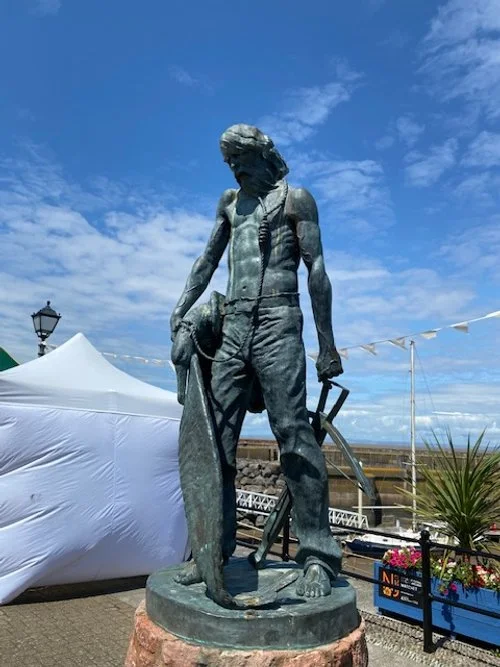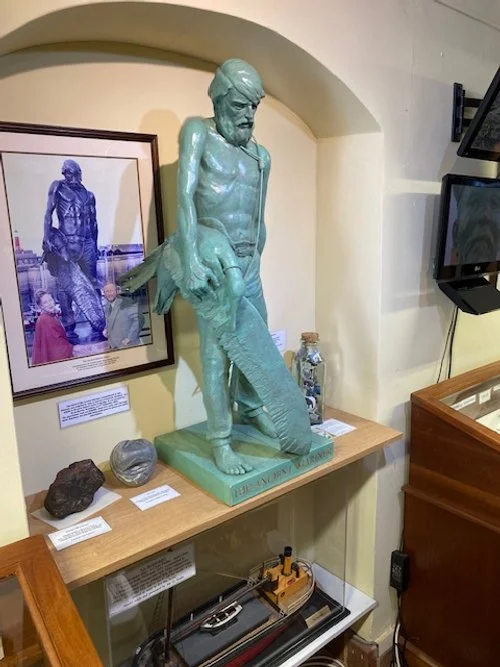Watchet
'God save thee, ancient Mariner!
From the fiends, that plague thee thus!—
Why look'st thou so?'—With my cross-bow
I shot the ALBATROSS.
In 1797 Samuel Taylor Coleridge walked over the Quantock Hills from his home in Nether Stowey, accompanied by his friends, William and Dorothy Wordsworth, and came upon Watchet. It is said that looking down at the town from St. Decuman’s Church gave him the inspiration for his poem.
A seven-foot high effigy of the mariner was designed and created by sculptor Alan B. Herriot and was unveiled in 2003. Standing on the Esplanade, it shows the mariner with his crossbow dangling from his finger, gazing down at the dead albatross in his arms which is tied to a rope around the seaman’s neck. A haunting look of horror has been captured on his face as he reflects on the disastrous consequences of his actions.
‘Rime of the Ancient Mariner’ is a poem which tells of the misfortunes of a seaman who shoots an albatross, spelling disaster for his ship and fellow sailors. The ancient mariner has stopped a man who is on his way to a wedding ceremony so that the mariner can share his story.
Although the ancient mariner didn’t exist, it is thought that Coleridge was inspired by a conversation with Wordsworth, who had recently read George Shelvocke's ‘A Voyage Round the World’. In this, Shelvocke writes of an incident when his second in command shot an albatross, which had been following the ship for several days. The ship, the Speedwell, was later lost at Juan Fernandez Island. However, others say the poem was inspired by a dream that Coleridge's friend, George Cruikshank had after reading Thomas James's Strange and Dangerous Voyage, which refers to an old man who had been shipwrecked.
On my last visit to Watchet, the weather was beautiful and the market was in full swing. The town was thriving, full of visitors and locals alike. Few paused to look at the statue as they scurried about their business or wandered along enjoying ice creams or bags of chips. However, I found it poignant to reflect that perhaps Coleridge, with the Wordsworths, had stood on this harbour, gazing out to sea and breathing in the inspiration which produced this epic poem. Although not one of my personal favourites, there is no doubting the power of the writing.
There is a small model of the statue in the Watchet museum, explaining how the Watchet Market House Museum Society decided to commemorate the link between Coleridge, his poem and the town by commissioning a statue as an attraction for local people and visitors alike.
The Esplanade
Watchet
TA23 0AJ
You can read about the Watchet Community Bookshop here.





